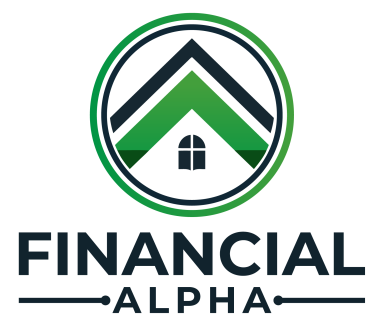Gap insurance (Guaranteed Asset Protection) protects car owners who owe money on their vehicle against financial loss if their car is destroyed or stolen. When the vehicle’s value is lower than the remaining loan amount, gap insurance helps pay the leftover debt on your car loan. Understanding whether paying for gap insurance makes financial sense and when avoiding this cost would be best is important.
Gap Insurance
The regular auto insurance policy only pays for the current value of your car when that value falls below your loan balance. With Gap insurance, you would not need to pay the remaining debt if your vehicle becomes a total loss.
When Is Gap Insurance Worth the Cost?
You should buy gap insurance if your car rapidly loses value and your loan amount exceeds its market price. The worth of a brand-new vehicle decreases significantly right after purchasing it. Gap insurance offers safety by covering the difference between what you owe on your car loan and its value when completely damaged.
You should purchase gap coverage through your leasing contract because car leasing companies require it.
Most leasing companies demand that occupants hold gap insurance cover when renting cars. When you lease a vehicle, you must cover the loss of its value through depreciation payments but would pay more to the leasing company if a total loss happens. After your car is stolen or destroyed, gap insurance helps you avoid paying all the remaining money you owe on your loan.
When to Skip Gap Insurance: Older Cars
You will need gap insurance less as your vehicle ages because its market value declines greatly. Your loan amount will decrease more easily than your car’s loss of value, so you will not encounter major financial strain if the vehicle is totaled. In such scenarios, you do not require gap insurance, as saving that money will serve you better for future car repairs or replacements.
How to Determine if Gap Insurance Is Right for You
Determine if buying gap insurance benefits, you by comparing your outstanding loan amount with your vehicle’s market value. A car worth less than your outstanding loan balance suggests purchasing gap insurance for protection. When your loan exceeds your car’s current sales, you no longer require an additional insurance policy. Study your car’s expected value decline and current money state to know if you need gap insurance.
Look at Your Discount and Loan Duration Before Deciding
How big your initial payment and your arrangement terms affect your decision to buy gap insurance. You need gap insurance when you borrow money for a car and make a small down payment while extending your payment terms. Your likelihood of facing a loan balance gap decreases when you establish a substantial down payment or take out a short-term auto loan.
Gap Insurance for High-Risk Drivers
Gap insurance works best for high-risk drivers who suffered accidents and drove poorly earlier. Drivers who pose a high risk on the road must pay more insurance, and their vehicles pass from total loss more frequently in accidents. If an accident totals your vehicle, gap insurance covers your financial loss since you would already suffer emotionally from losing your car.
Is Gap Insurance Expensive?
Depending on several factors, your provider generally offers affordable gap insurance coverage at $20 to $40 per year as an additional policy option. Many lenders include gap insurance, but this policy costs more than when you get it through your regular auto insurance provider. Find out which option provides the lowest total expense to find the most suitable solution for your budget.
How Gap Insurance Differs from Comprehensive and Collision Insurance
Gap insurance exists independently from both comprehensive and collision coverage plans. It helps you pay off your vehicle loan when it suffers accident damage or theft due to the gap between the loan amount and Carryout protection. You should combine gap insurance and collision/comp for comprehensive coverage. This type of insurance protects the amount that standard policies do not cover.
What Happens if You Pay Off Your Loan Early?
When you clear your car loan ahead of schedule and refinance, the amount you owe decreases, so gap insurance likely becomes outdated. When you owe less than your car is worth, the chances of experiencing a market gap decrease. After your vehicle debt decreases below market value you can end your gap insurance coverage because this protection safeguards your finances in accidents.
How Does Taking Gap Insurance Impact Your Car Insurance Costs
Gap insurance adds minimal expense to your car insurance policy but does not greatly increase your premium. As a supplemental policy it usually increases your monthly premium by only a small percentage. Even though gap insurance costs your money you mostly do not experience these fees because it helps secure your financial future when your car is destroyed or disappears.
Review your Financing Agreement to Judge the Value of Gap Insurance
Assess your car loan terms and financing choices before getting gap insurance. Your risk of paying extra increases when taking out loans with high interest rates and extended repayment periods. In this situation, you will get enhanced coverage when you buy gap insurance. When you have good loan terms and fast loan payments, gap insurance loses its importance.
Gaps in vehicle coverage need to be mandated by state regulations.
Several states instruct specific drivers to purchase gap insurance. States enforce gap insurance inclusion when people borrow more money than their cars are worth through car loans. You need to check your state’s laws to understand if buying gap insurance is mandatory or if you can decide not to purchase it.
What Should Be the Duration of Your Gap Insurance Coverage?
Continue to pay for gap insurance if you have unpaid loan balances that remain more than your car value shows on the market. Many drivers no longer need gap insurance protection after their loan amount decreases through payments. Once drivers make substantial loan payments, their need for this coverage ends because most will reach that stage within a few years. The coverage needs will end when your vehicle depreciates enough compared to your loan payment progress.
The Risks of Not Having Gap Insurance
Even though gap insurance seems like an additional cost, it becomes essential during specific challenging moments. When you do not have gap insurance coverage, your remaining loan amount must be paid post-accident even though you no longer possess the car. Repaying a full car loan becomes unsustainable when your funds are already limited. Purchasing gap insurance defends you financially from loss when something bad happens to your car.
Should You Take Gap Insurance from Your Lender
Your lender typically offers gap insurance on financed vehicles, but you should view different options first. Direct purchases of gap insurance from lenders or dealers cost more than adding it to your existing car insurance plan. Check various gap insurance offerings for the best rate for your unique requirements.
Alternatives to Gap Insurance
Since gap insurance seems expensive or unhelpful, you can use several approaches. Instead, you can lower loan amounts or pay extra cash at purchase. Buying the vehicle with a lower loan amount lets you drive away from the dealership without financial risks. Auto insurers can add Loan/Lease Payoff Riders to policies which work like gap insurance at no added cost.
Conclusion
Gap insurance shows good value in vehicle finance situations, even if you buy or lease new cars. The insurance protects your vehicle if it becomes un-drivable after damage or theft while preventing you from debt responsibility for a loaned vehicle. Insurance may not be needed for owners of older cars or individuals whose car debt is less than the current market value gap. Examine your specific needs to decide whether you need gap insurance coverage.







